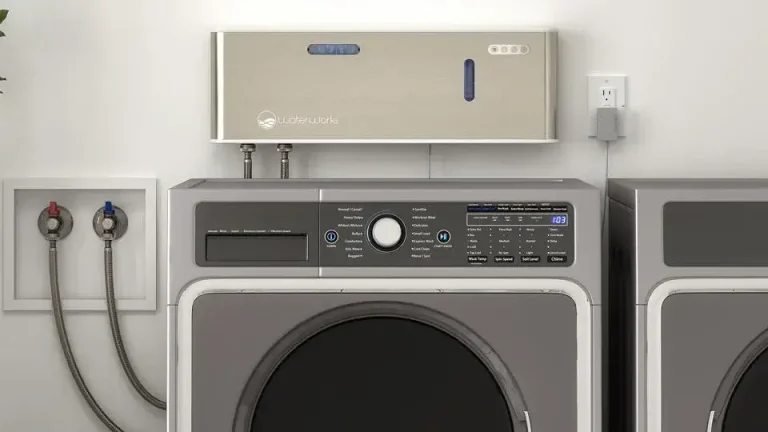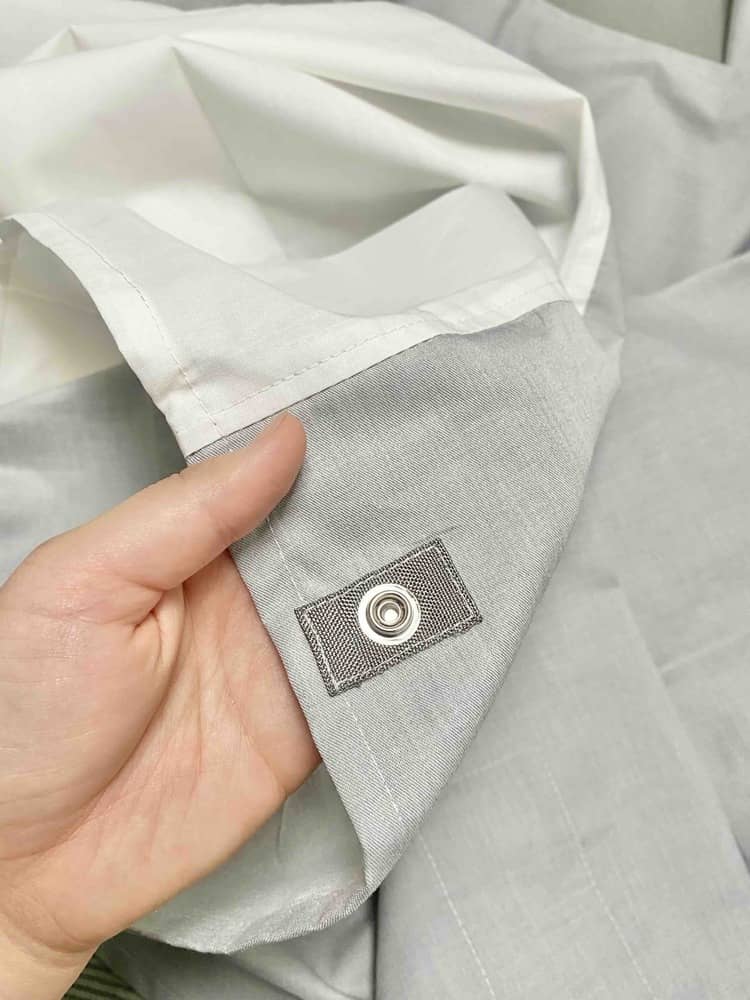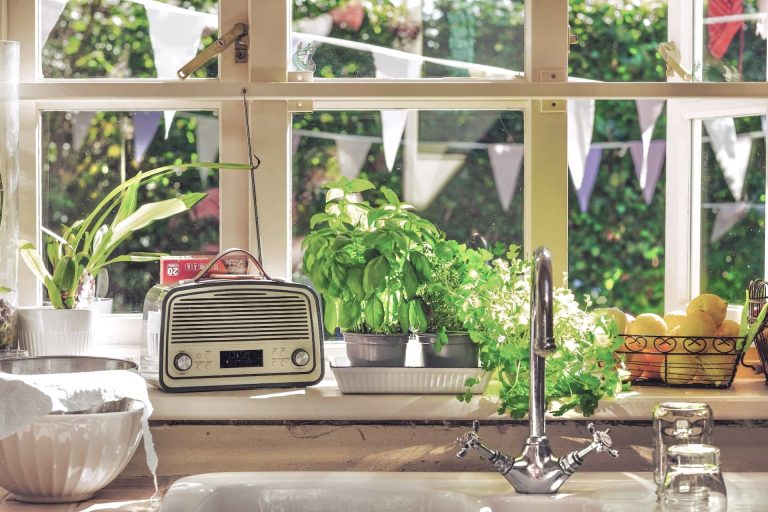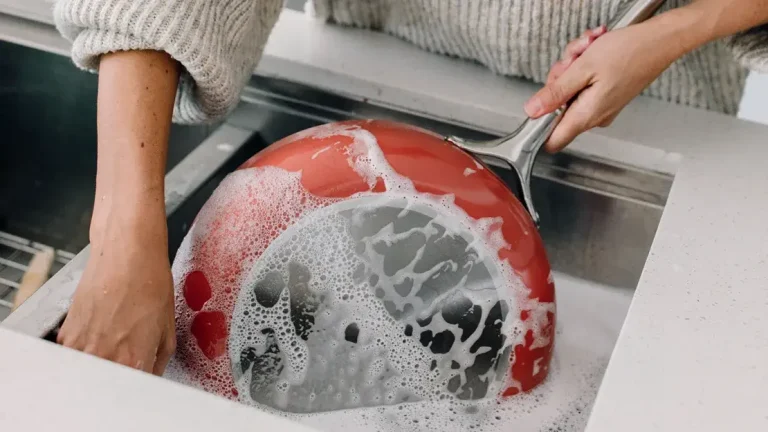An Expert Guide: How To Safely Wash and Dry Your Silk Pillowcase Without Damaging It (And Keep it Like New!)
Not only do silk pillowcases add a little luxury to your sleeping experience, but they help keep your hair and skin looking good too. Silk is like cotton’s high-maintenance sister – but you know she’s worth the extra effort.
For all your silk pillowcases do for you, it’s worth putting in a little extra TLC when caring for them. Silk is delicate and requires special care, but with the right techniques, you can keep your silk pillowcase looking like new for years to come.
How to Wash Silk Pillowcases to Keep Them Pristine
We’ll be going over two methods for washing silk pillowcases – hand washing and machine washing. We’ve laid out their pros and cons – choose the one that suits your needs best.
Why Silk Pillowcases Need Special Care
Unlike cotton and other plant fibers made of carbohydrates, silk is made from natural protein fibers produced by silkworms.
These delicate protein-based fibers require special care to maintain their softness and shine. The heat and agitation of a traditional washing machine can damage the fibers, causing them to shrink, lose their luster, and become rough over time.
Step-by-Step Instructions To Wash Your Silk Pillowcase Like an Expert
Whether you’re washing a silk pillowcase or silk sheets, the instructions are the same.
Handwashing vs Machine Washing Silk
Handwashing
Pros:
- Your silk pillowcase will last longer
- No damage or shrinkage
- Keeps shine and softness
- Takes only 5-8 minutes in total!
Cons:
- Requires more effort and hands-on attention
Machine Washing
Pros:
- Quick and convenient
- Can save time if you’re busy
Cons:
- Risk of damage or shrinkage due to heat and agitation
- Less gentle on delicate silk fibers, even if you use a mesh bag
- Reduces shine and softness
Now, let’s dive into the specific steps for each method.
Method 1: Hand Wash
Learn from my experience: I’ve owned multiple silk pillowcases, and hand washing makes ALL the difference. I’m lazy and like to take shortcuts, but I’ll take the extra 5 minutes to hand wash my silk pillowcase. It’s just that worth it.
1) What you’ll need
- Nontoxic mild detergent (both wool-wash or silk-wash detergents are safe)
- A basin or clean sink
- Soft clean towel
2) Preparing your pillowcase for washing
- Turn the pillowcase inside out and unbutton any buttons or zippers.
- Inspect the pillowcase for any stains or spots and treat them with a gentle stain remover before washing (jump to how to remove stains from silk).
3) Washing your pillowcase
- Fill the basin or sink with cold water and add a small amount of nontoxic mild detergent.
- Gently place the pillowcase in the water and swirl it around. Gently agitate it, making sure to avoid any aggressive rubbing or scrubbing.
- Let the pillowcase soak in the water for 3-5 minutes.
- Drain the soapy water and refill the basin with clean cool water to rinse the pillowcase.
- Optional: add about 1/4 cup of vinegar to the rinse water to remove all traces of soap. It’ll help restore the silk, and keep it shiny!
- Rinse the pillowcase until all soap suds are gone. Do not wring or twist the silk as this can damage the fibers.
Method 2: Machine Wash
For those who are short on time: Good news! You can machine wash silk pillowcases.
1) What you’ll need
- Nontoxic mild detergent (both wool-wash or silk-wash detergents are safe)
- A mesh laundry bag
2) Preparing your pillowcase for washing
- Check for any stains and remove them before washing (jump to how to remove stains from silk)
- Turn the pillowcase inside out and place it in the mesh laundry bag.
3) Washing your pillowcase
- Set your washing machine to a delicate cycle with cold water.
- Add a small amount of mild detergent to the machine, following the instructions on the bottle for the correct amount.
- Start the washing machine and let it run through its full cycle.
Drying and Finishing
1) What you’ll need:
- Soft clean towel
2) Drying your pillowcase
- After washing, remove the pillowcase from the machine or basin and gently squeeze out any excess water. Do not twist or wring the fabric.
- Lay the pillowcase flat on a towel and roll it up, pressing gently to absorb more water.
- Unroll the towel and let the pillowcase air dry completely on a clothesline or drying rack. Avoid direct sunlight as it can damage the silk fibers.
Key Considerations to Successfully Wash a Silk Pillowcase
- Brrr: Always use cold water and a gentle detergent. This will help protect the delicate fabric.
- No bleach, ever: Avoid using any bleaching agents or harsh chemicals as they can damage the silk fabric.
- No fabric softeners, either: Fabric softeners can coat the silk fibers and cause them to lose their natural sheen and smoothness.
- Be gentle: Treat your silk pillowcase like a newborn. Don’t rub or scrub it aggressively, otherwise, it’ll cry (just kidding). It’ll get damaged though.
- Air dry, ALWAYS: Never put a silk pillowcase in the dryer, as the heat can shrink or damage the fabric.
- Treat stains ASAP: If you notice any stains on your silk pillowcase, treat them as soon as possible before washing. See below for stain removal tips.
- Hand washing is best: To maintain the softness and shine of your silk pillowcase, consider hand-washing it every 2-3 weeks instead of machine washing.
- Storage: Store your washed and dried silk pillowcases in a cool, dry place away from direct sunlight to avoid any fading or discoloration.
- Wash Separately: It is recommended to wash your silk pillowcase separately from other laundry items, especially those with zippers or rough textures that could cause friction.
Taking it to the Next Level: How to Properly Remove Stains from Your Silk Pillowcase and Silk Bedding
- Oil-based stains: For oil-based stains such as makeup or greasy food spills, cover the stain with a thick layer of an absorbent powder such as baking soda, cornstarch, or talcum powder. Allow it to sit overnight. The powder will absorb the oil and can then be brushed away. Repeat if necessary before washing.
- Water-based stains: For water-based stains like tea or blood, gently blot the stain with a clean cloth or towel to remove as much liquid as possible. Then, mix equal parts cold water and white vinegar and apply it to the stained area. Let it sit for 10-15 minutes before rinsing with cold water and washing as usual.
- Ink stains: For ink stains, apply rubbing alcohol directly to the stain and let it sit for a few minutes before gently blotting with a clean cloth. Repeat this process until the stain is completely removed, then wash as usual.
- Pre-treating: For tougher stains, such as wine or chocolate, pre-treat the stained area by lightly rubbing a gentle laundry detergent directly onto the fabric and letting it sit for 10-15 minutes before washing.
Alternatives to Bleach to Whiten Silk Pillowcases
Bleach can be harsh on silk and may cause damage, yellowing, or discoloration. Here are better, gentler methods to whiten your silk pillowcases:
- Distilled white vinegar: Soak your silk pillowcase in a mixture of cold water and white vinegar for about an hour before washing. The acidity of the vinegar can help remove any yellowing or discoloration.
- Baking soda: Mix equal parts baking soda and water to create a paste, then apply it to the stained area and let it sit for 30 minutes before washing.
- Hydrogen peroxide: Hydrogen peroxide is a fantastic, nontoxic alternative to bleach. Mix 1 part hydrogen peroxide with 3 parts water and soak your silk pillowcase for 30 minutes before washing.
Wrapping Up: My Experience With Washing Silk Pillowcases
I used to throw my silk pillowcase directly in the washer and the dryer to save time. Over time, I noticed that my silk pillowcase wasn’t as soft and shiny as it used to be. It didn’t feel so luxurious anymore – it became dull and lost its softness.
When I upgraded my silk pillowcase to a new one made of 100% mulberry silk, I decided to treat it nicer. It was a lot more expensive than my previous one (which I’d bought on Amazon).
Since this one was a bigger investment, I decided to treat it nicely so I could keep it as pristine as possible. I wanted my new bougie silk pillowcase to last me a long time.
When I compare my old machine-washed, heater-dried silk pillowcase to my new, hand-washed, air-dried one, the difference is striking. The old pillowcase was rough and dull, while the new one is still soft and shiny, and makes me feel luxurious – like a princess.
These methods really work, and they make a huge difference. I hope you’ll decide to try them out for yourself.







